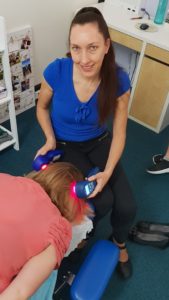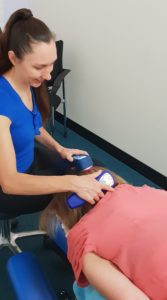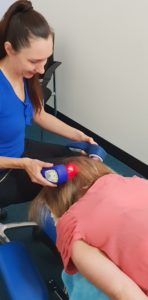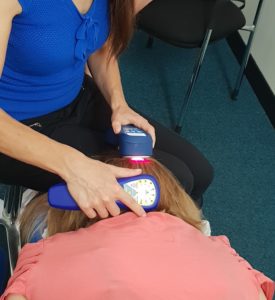May 26, 2023
A stroke occurs when blood supply to the brain is interrupted. This deprives your brain of oxygen and nutrients needed to function, which can cause your brain cells to die. The most common artery affected by the cerebrovascular accident is the Middle Cerebral Artery. A stroke may be caused by a blocked artery (ischemic stroke), or the bursting or leaking of a blood vessel (haemorrhagic stroke). It’s the third most common cause of death in developed countries and is known as the leading cause of adult disability, although there has been recent advances in the treatment for stroke and prevention of the condition.
Signs and symptoms of a stroke:
Paralysis or numbness of the face, arm and leg
Difficulty speaking and swallowing
Trouble understanding
Facial drooping
Vision problems
Unsteadiness or difficulty coordinating movements
Modifiable Risk Factors of stroke:
High blood pressure and cholesterol
Smoking, alcohol and obesity
Poor diet and a lack of exercise
Medical Risk Factors:
Diabetes
Transient Ischemic attack
Irregular pulse
Non-modifiable Risk Factors:
Gender
Age
Family History
Management of stroke after an attack is most commonly associated with rehabilitation. For some, recovery can be quick and last only a couple of weeks, while others may take months or years depending on the extent of the attack. Rehabilitation can be in the form of physiotherapy to improve muscle control, balance and coordination. As well as speech therapy to retain facial muscles and language, while also assisting in swallowing and feeding issues. Finally, occupational therapy can be used to improve hand eye coordination and activities of daily living including cooking and dressing. Although recently stroke has benefited highly from the effects of Cold Laser Therapy, commonly referred to as Low-Level Laser Therapy.



 Cold Laser Therapy (low-level laser therapy) is designed to improve the circulation to affected tissues in the body and reduce the inflammation and swelling the disorder may have caused. Cold Laser Therapy actively treats symptoms of stroke by reducing the quantity of neuro-inflammation, improving cerebral circulation and hence improve brain oxygenation. The treatment is painless and doesn’t expose the patient to any risks as the cold laser therapy doesn’t require any surgical incisions or heat.
Protocol of stroke treatment with Cold laser/low level laser
The laser emitter is placed on three locations over the skull including; Hairline (front of skull where hair begins to grow), precuneus (back of skull) and the inferior parietal bone (located just above the ear on the affected side). Treatments generally last 20 minutes each with the cold laser being placed on each location for 5 minutes at a time. The recommended amount of sessions for maximal recovery vary from 10-30 visits depending on the severity of the injury, with 3 treatments prescribed each week.
So if you have observed any of the symptoms as mentioned above, or you’ve had a prior history with strokes before and occurrences aren’t resolving, Lakeside Laser may assist you. Lakeside Laser provides the alternative medicine in the recovery of many soft tissue injuries or dysfunction of blood vessels. Located on 3/45 Central Walk in one of Perth’s northern suburbs Joondalup, Lakeside Laser provides treatment from many suburbs in close proximity of it’s practice as well as many others from all over Perth. We have had visitors from Kinross, Ellenbrook, Kallaroo, Warwick, Heathridge, Woodvale, Pearsall, Bassendean, Bayswater and Landsdale. If you would like to book an appointment or discuss regular Laser management, feel free to call us on 9300 0095 or visit our website www.lakesidelaser.com.au. We look forward to hearing from you shortly.
Cold Laser Therapy (low-level laser therapy) is designed to improve the circulation to affected tissues in the body and reduce the inflammation and swelling the disorder may have caused. Cold Laser Therapy actively treats symptoms of stroke by reducing the quantity of neuro-inflammation, improving cerebral circulation and hence improve brain oxygenation. The treatment is painless and doesn’t expose the patient to any risks as the cold laser therapy doesn’t require any surgical incisions or heat.
Protocol of stroke treatment with Cold laser/low level laser
The laser emitter is placed on three locations over the skull including; Hairline (front of skull where hair begins to grow), precuneus (back of skull) and the inferior parietal bone (located just above the ear on the affected side). Treatments generally last 20 minutes each with the cold laser being placed on each location for 5 minutes at a time. The recommended amount of sessions for maximal recovery vary from 10-30 visits depending on the severity of the injury, with 3 treatments prescribed each week.
So if you have observed any of the symptoms as mentioned above, or you’ve had a prior history with strokes before and occurrences aren’t resolving, Lakeside Laser may assist you. Lakeside Laser provides the alternative medicine in the recovery of many soft tissue injuries or dysfunction of blood vessels. Located on 3/45 Central Walk in one of Perth’s northern suburbs Joondalup, Lakeside Laser provides treatment from many suburbs in close proximity of it’s practice as well as many others from all over Perth. We have had visitors from Kinross, Ellenbrook, Kallaroo, Warwick, Heathridge, Woodvale, Pearsall, Bassendean, Bayswater and Landsdale. If you would like to book an appointment or discuss regular Laser management, feel free to call us on 9300 0095 or visit our website www.lakesidelaser.com.au. We look forward to hearing from you shortly.



 Cold Laser Therapy (low-level laser therapy) is designed to improve the circulation to affected tissues in the body and reduce the inflammation and swelling the disorder may have caused. Cold Laser Therapy actively treats symptoms of stroke by reducing the quantity of neuro-inflammation, improving cerebral circulation and hence improve brain oxygenation. The treatment is painless and doesn’t expose the patient to any risks as the cold laser therapy doesn’t require any surgical incisions or heat.
Protocol of stroke treatment with Cold laser/low level laser
The laser emitter is placed on three locations over the skull including; Hairline (front of skull where hair begins to grow), precuneus (back of skull) and the inferior parietal bone (located just above the ear on the affected side). Treatments generally last 20 minutes each with the cold laser being placed on each location for 5 minutes at a time. The recommended amount of sessions for maximal recovery vary from 10-30 visits depending on the severity of the injury, with 3 treatments prescribed each week.
So if you have observed any of the symptoms as mentioned above, or you’ve had a prior history with strokes before and occurrences aren’t resolving, Lakeside Laser may assist you. Lakeside Laser provides the alternative medicine in the recovery of many soft tissue injuries or dysfunction of blood vessels. Located on 3/45 Central Walk in one of Perth’s northern suburbs Joondalup, Lakeside Laser provides treatment from many suburbs in close proximity of it’s practice as well as many others from all over Perth. We have had visitors from Kinross, Ellenbrook, Kallaroo, Warwick, Heathridge, Woodvale, Pearsall, Bassendean, Bayswater and Landsdale. If you would like to book an appointment or discuss regular Laser management, feel free to call us on 9300 0095 or visit our website www.lakesidelaser.com.au. We look forward to hearing from you shortly.
Cold Laser Therapy (low-level laser therapy) is designed to improve the circulation to affected tissues in the body and reduce the inflammation and swelling the disorder may have caused. Cold Laser Therapy actively treats symptoms of stroke by reducing the quantity of neuro-inflammation, improving cerebral circulation and hence improve brain oxygenation. The treatment is painless and doesn’t expose the patient to any risks as the cold laser therapy doesn’t require any surgical incisions or heat.
Protocol of stroke treatment with Cold laser/low level laser
The laser emitter is placed on three locations over the skull including; Hairline (front of skull where hair begins to grow), precuneus (back of skull) and the inferior parietal bone (located just above the ear on the affected side). Treatments generally last 20 minutes each with the cold laser being placed on each location for 5 minutes at a time. The recommended amount of sessions for maximal recovery vary from 10-30 visits depending on the severity of the injury, with 3 treatments prescribed each week.
So if you have observed any of the symptoms as mentioned above, or you’ve had a prior history with strokes before and occurrences aren’t resolving, Lakeside Laser may assist you. Lakeside Laser provides the alternative medicine in the recovery of many soft tissue injuries or dysfunction of blood vessels. Located on 3/45 Central Walk in one of Perth’s northern suburbs Joondalup, Lakeside Laser provides treatment from many suburbs in close proximity of it’s practice as well as many others from all over Perth. We have had visitors from Kinross, Ellenbrook, Kallaroo, Warwick, Heathridge, Woodvale, Pearsall, Bassendean, Bayswater and Landsdale. If you would like to book an appointment or discuss regular Laser management, feel free to call us on 9300 0095 or visit our website www.lakesidelaser.com.au. We look forward to hearing from you shortly.


